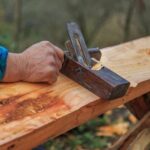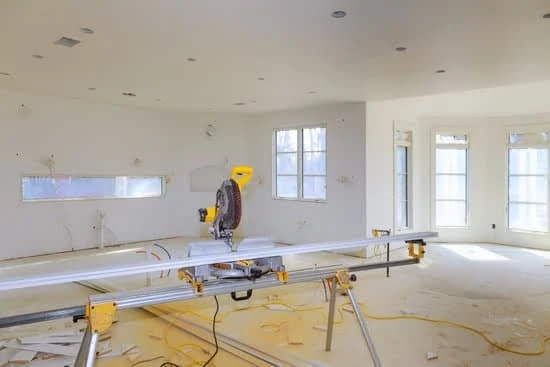Woodworking is a skill that allows individuals to create beautiful and functional pieces of furniture. One crucial aspect of woodworking projects, particularly when constructing tables, is properly attaching table legs. The stability and durability of a table rely on the correct attachment of its legs, ensuring it can withstand daily use and support heavy loads. In this article, we will explore the importance of understanding how to attach table legs in woodworking projects.
Properly attaching table legs involves more than just screwing or nailing them to the tabletop. It requires careful consideration of joinery techniques, appropriate tools and materials, and thorough preparation. The way in which the legs are attached can significantly impact the overall strength and longevity of the finished piece.
In this comprehensive guide, we will cover everything you need to know about attaching table legs in woodworking projects. We will discuss different types of table legs commonly used, essential tools and materials needed for the task, as well as various joinery techniques to ensure a sturdy attachment. Additionally, we will provide a step-by-step guide accompanied by expert tips for achieving a strong and durable connection between the table top and legs.
Whether you are an aspiring woodworker or have some experience with woodworking projects, understanding how to properly attach table legs is essential for creating functional and visually appealing furniture pieces. So let’s dive in and learn all about the proper techniques to ensure your tables stand strong for years to come.
Types of table legs
In woodworking projects, there are various types of table legs to choose from, each offering its own unique style and functionality. The choice of table legs can greatly affect the overall look and stability of the finished piece. It is important to consider the design aesthetic and intended use of the table when selecting the appropriate type of legs.
One commonly used type of table leg is the turned leg. Turned legs are typically made by turning a square or rectangular block of wood on a lathe to achieve a smooth, cylindrical shape. This type of leg often features intricate details and decorative carvings, making it a popular choice for traditional or ornate pieces. Turned legs provide a classic and elegant look to any table design.
Another popular option is the tapered leg. Tapered legs are characterized by their gradual decrease in width towards the bottom. They offer a sleek and modern appearance, making them suitable for contemporary or minimalist styles. Tapered legs are often seen in mid-century modern furniture designs but can also be used in various other aesthetics.
For those looking for a more rustic or industrial look, chunky or square legs may be the best choice. These legs are typically thicker and have less detail, creating a more robust and substantial appearance. Chunky or square legs are often used in farmhouse-style tables or furniture pieces that require extra stability.
Lastly, cabriole legs offer a classic and sophisticated touch to any table design. These S-shaped curved legs originated from French furniture styles from the 18th century and feature graceful curves and intricate carvings at the knees and feet. Cabriole legs are commonly used in vintage or antique-inspired woodworking projects.
| Type | Description |
|---|---|
| Turned Leg | Smooth, cylindrical shape with decorative carvings |
| Tapered Leg | Gradual decrease in width towards the bottom for a modern look |
| Chunky/Square Leg | Thicker and more robust, suitable for rustic or industrial styles |
| Cabriole Leg | S-shaped curved leg with intricate carvings, offering a classic touch |
By understanding the different types of table legs available, woodworkers can select the most appropriate style to achieve their desired design aesthetic and functional requirements. Whether it’s a turned leg for an elegant dining table or a chunky leg for a farmhouse coffee table, choosing the right type of legs is crucial in creating a visually appealing and sturdy woodworking project.
Necessary tools and materials
When it comes to attaching table legs in woodworking, having the right tools and materials is essential for a successful project. This section will provide a comprehensive list of the necessary tools and materials needed for attaching table legs.
Tools
- Drill: A good quality drill with various drill bits is essential for drilling pilot holes and creating countersinks.
- Screwdriver: Depending on the type of screws used, you may need a screwdriver or a power drill with a screwdriver bit.
- Measuring tape: Accurate measurements are crucial for ensuring that the table legs are attached at the correct height and position.
- Level: A level is necessary to ensure that the table legs are correctly aligned.
- Clamps: Clamps are useful for holding the table legs in place while attaching them.
- Chisels: Chisels can be used to remove excess wood or create mortises for certain joinery techniques.
- Router (optional): A router can be used to create decorative edges on the table legs.
Materials
- Table Legs: Choose from various options such as pre-made wooden legs, turned legs, or custom-designed legs based on your preference.
- Screws: Select screws that are appropriate for attaching table legs to your specific tabletop material, taking into consideration its thickness and weight-bearing capacity.
- Wood glue: Wood glue helps reinforce the attachment between the table leg and tabletop for added stability.
- Dowels (optional): Dowels can be used in conjunction with wood glue to further strengthen the attachment between the table leg and top.
It’s important to invest in high-quality tools that will make your woodworking project more efficient and produce better results. Additionally, ensure that you have enough materials on hand before starting your project so you can avoid any delays.
Preparation
Cleaning and Sanding
Before attaching the table legs, it is essential to prepare both the table top and the legs themselves. This involves cleaning and sanding the surfaces to ensure a smooth and even attachment. If the table top is made of wood, start by wiping it down with a damp cloth to remove any dust or debris. For a deeper clean, use a mild soap solution. Once clean, let the table top dry thoroughly.
Next, focus on sanding the table top and legs. Sanding helps to create a smooth surface for better adhesion and also removes any existing finish or imperfections. Start with coarser grit sandpaper (around 80-120 grit) to remove any rough spots or blemishes. Then, progressively move to finer grit sandpaper (such as 220 grit) for a smoother finish.
Pre-drilling Holes
To ensure accurate placement and prevent splitting of the wood, pre-drilling holes is an important step in preparing for leg attachment. Measure and mark where each leg will be attached on the underside of the table top using a pencil or tape measure. Then, use an appropriate sized drill bit to pre-drill pilot holes in those marked spots.
The size of the drill bit should be slightly smaller than the size of your screws or bolts so that they can securely hold the legs without causing any damage. It’s crucial that these pilot holes are drilled straight and at an appropriate depth to guarantee proper leg attachment later on.
Leg Preparation
In addition to preparing the tabletop, it’s important to spend some time getting the table legs ready for attachment as well. If your legs are unfinished, you may choose to apply a finish such as stain or paint before attaching them. Applying a protective finish not only enhances their appearance but also helps protect against moisture damage or scratches over time.
If your legs already have a finish, thoroughly clean and sand them to ensure proper adhesion. If the legs have any sharp edges or rough spots, sand or file them down. This will not only improve the leg’s appearance but also prevent any potential injuries from sharp protrusions.
By taking the time to properly clean, sand, and pre-drill, you’ll set a solid foundation for attaching table legs in woodworking projects. Good preparation is essential for achieving sturdy and long-lasting leg attachment that will withstand regular use and ensure the overall stability of your finished piece.
Joinery techniques
Joinery techniques are essential when it comes to attaching table legs in woodworking. Using the appropriate joinery technique ensures that the legs are securely attached, providing stability and durability to the table. There are several common joinery techniques that can be used for attaching table legs.
One popular joinery technique is mortise and tenon joints. This method involves cutting a rectangular hole (mortise) into the top of the table leg and creating a matching protrusion (tenon) on the bottom of the table top. The tenon then fits into the mortise, creating a strong and secure connection. Mortise and tenon joints can be further strengthened by adding wooden dowels or screws for additional support.
Another commonly used joinery technique is the corner brace method. This technique involves attaching metal corner braces to each leg of the table and securing them to the underside of the table top with screws or bolts. Corner braces provide excellent stability and are particularly useful for tables with larger or heavier tops.
Dovetail joints are another option for attaching table legs. Dovetail joints involve creating interlocking “tails” on one piece of wood that fit into corresponding “pins” on another piece of wood. This creates a tight connection that is resistant to pulling forces, making it ideal for securing table legs.
| Joinery Technique | Description |
|---|---|
| Mortise and Tenon Joints | This technique involves cutting a rectangular hole (mortise) into the top of the table leg and creating a matching protrusion (tenon) on the bottom of the table top. |
| Corner Brace Method | This technique involves attaching metal corner braces to each leg of the table and securing them to the underside of the table top with screws or bolts. |
| Dovetail Joints | This technique involves creating interlocking “tails” on one piece of wood that fit into corresponding “pins” on another piece of wood. |
Each joinery technique has its advantages and disadvantages, and the choice depends on factors such as the design of the table, the type of wood being used, and personal preference. It is important to choose a joinery technique that will ensure a sturdy attachment while also complementing the overall aesthetic of the table. Taking the time to explore different joinery techniques and understanding their strengths and weaknesses will help woodworking enthusiasts create beautiful and functional tables.
Step-by-step guide
Attaching table legs properly is a crucial step in woodworking projects to ensure that the table is stable and sturdy. In this step-by-step guide, we will walk you through the process of attaching table legs accurately for a successful woodworking project.
Step 1: Measure and mark
Start by measuring and marking the placement of the table legs on the table top. Use a tape measure to find the desired distance from each corner, making sure they are evenly spaced. Mark these measurements with a pencil.
Step 2: Drill pilot holes
Next, it’s important to drill pilot holes in both the table legs and tabletop. This will prevent splitting and cracking of wood when inserting screws. Choose an appropriately sized drill bit for your screws and pre-drill holes at the marked spots on both the legs and tabletop.
Step 3: Attach leg brackets
If you prefer using leg brackets for added stability, now is the time to install them. Position the leg brackets over the pilot holes on both the tabletop and legs. Then, secure them in place using screws or bolts provided with the brackets. Make sure they are tightly fastened for a strong attachment.
Step 4: Attach table legs
When attaching the table legs, align them with the pilot holes you drilled earlier. Start by inserting screws into one leg at a time through their respective pilot holes and gently tighten until snug, but avoid over-tightening as it may damage your structure or cause misalignment. Repeat this process for each leg until all are securely attached.
Step 5: Test stability
Once all four legs are attached, test the stability of your table by gently rocking it. If you notice any wobbling or instability, recheck the attachment points and ensure that all screws are tight. If needed, make adjustments or add additional support such as corner brackets to improve stability.
Following these step-by-step instructions will help you securely attach table legs in your woodworking project. Remember to measure accurately, use appropriate tools, and regularly check for stability during the process. With proper attachment, your table will not only be functional but also a beautiful addition to your home or workspace.
Tips for a sturdy attachment
When it comes to attaching table legs in woodworking, a sturdy and durable attachment is crucial for the overall stability and longevity of the table. Here are some expert tips and tricks to ensure a strong attachment of table legs:
- Choose the right joinery technique: The joinery technique you choose plays a significant role in the overall strength of the attachment. Some common joinery techniques include mortise and tenon joints, dowel joints, and pocket hole joinery. Consider the type of wood you’re working with, the design of the table, and your skill level when selecting the most appropriate joinery technique.
- Reinforce with corner brackets or braces: To further enhance the strength of the attachment, you can use corner brackets or braces. These metal or wooden supports can be added at each corner where the leg meets the tabletop. They provide extra stability by reinforcing the joint and preventing any wobbling or loosening over time.
- Use quality hardware: Choosing high-quality hardware is essential for a sturdy attachment. Opt for heavy-duty screws or bolts that are specifically designed for furniture assembly. Make sure they are long enough to penetrate through both the tabletop and legs securely.
- Apply glue before securing: Applying wood glue before screwing or bolting down the table legs can significantly increase their stability. Spread a thin layer of wood glue on both surfaces to create a strong bond when they are joined together. Be sure to wipe off any excess glue immediately to prevent it from drying on the surface.
- Allow proper drying time: After attaching the table legs, give sufficient time for any glue used to dry thoroughly before using or moving the table around. Check the manufacturer’s instructions for specific drying times based on your chosen adhesive.
By following these expert tips, you can ensure that your attached table legs are sturdy and durable, providing long-lasting support for your woodworking project. Remember that proper attachment not only increases functionality but also enhances the overall appearance of the table. So take your time, use quality materials and techniques, and enjoy the satisfaction of a well-built piece of furniture.
Finishing touches
After attaching the table legs securely, it’s essential to give them a professional and polished look with some finishing touches. The finishing touches not only enhance the appearance of the table legs but also contribute to their longevity and durability. Two common finishing techniques for table legs are sanding and staining.
Sanding is an important step in woodworking that smoothens the surface of the wood, removes any imperfections, and prepares it for further treatment. To sand table legs properly, start by using coarse-grit sandpaper to eliminate any rough spots or unevenness. Gradually progress to finer-grit sandpapers until you achieve a smooth surface. Be sure to sand along the grain of the wood for best results.
Staining is another technique that adds depth and color to the table legs while highlighting their natural beauty. Before staining, it’s crucial to choose a stain color that complements the overall aesthetic of the project. Apply a thin layer of stain evenly onto the sanded surface of each leg using a brush or cloth, following the manufacturer’s instructions. Allow sufficient drying time between coats if additional depth or intensity is desired.
Additionally, various protective finishes can be applied after staining to safeguard your table legs against wear and tear, moisture damage, and UV rays. Common options include polyurethane varnish or lacquer. These finishes add an extra layer of durability and make cleaning easier while retaining the natural beauty of the wood.
To ensure optimal results with your finishing touches, take your time during this step of the process. Careful sanding, staining, and applying protective finishes will provide stunning results that elevate your woodworking project from ordinary to extraordinary.
As seen from this discussion on finishing touches, applying proper sanding techniques and selecting suitable stains can significantly enhance both functionality and aesthetics when attaching table legs in woodworking projects. These simple but effective steps allow you to showcase the natural beauty of wood while adding protection against environmental factors like moisture and sunlight exposure.
Stay tuned for the next section where we will address the common mistakes and provide helpful troubleshooting tips to avoid any errors during the table leg attachment process.
Troubleshooting and common mistakes
Woodworking can be a rewarding and satisfying hobby, but it is not without its challenges. When it comes to attaching table legs, there are some common mistakes that beginners often make. In this section, we will address these mistakes and provide troubleshooting tips to ensure a successful attachment of table legs.
One common mistake that many woodworkers make when attaching table legs is not properly aligning the legs with the tabletop. This can result in a wobbly or unstable table. To avoid this, it is important to carefully measure and mark the placement of each leg before making any cuts or holes. Double-check your measurements and use a level to ensure that the legs are perfectly aligned.
Another mistake that beginners often make is using insufficient or incorrect fasteners. It’s crucial to choose the right type of fasteners for attaching table legs, such as screws or bolts, depending on the design and weight-bearing capacity required for your project. Make sure to use enough fasteners to securely attach each leg, evenly distributing the weight across all four corners of the table.
Additionally, failing to properly reinforce the joints between the legs and tabletop can lead to weak attachment points. Reinforcing techniques such as adding corner brackets or wooden blocks at the joints can greatly enhance the stability and durability of your table. Take your time to plan out these reinforcements before starting your project.
If you encounter any issues during the attachment process, don’t hesitate to troubleshoot by reevaluating your measurements, fasteners, or reinforcements. It’s always better to fix any mistakes early on rather than having to redo or repair later.
By addressing these common mistakes and following these troubleshooting tips, you can ensure a strong and secure attachment of your table legs in woodworking projects. Taking the time to double-check measurements, use appropriate fasteners, reinforce joints if needed, and troubleshoot any issues will result in a sturdy and reliable finished product that you can be proud of.
Conclusion
In conclusion, properly attaching table legs in woodworking is crucial for the stability and functionality of the final product. By understanding the different types of table legs commonly used in woodworking projects and acquiring the necessary tools and materials, one can ensure a successful attachment process. Preparing both the table top and legs before joining them together is essential to achieve a strong and durable connection.
Exploring different joinery techniques provides options for attaching table legs that best suit the specific project. Whether it be using mortise and tenon joints, dowels, or brackets, choosing the appropriate method will contribute to the overall stability of the table. Following a step-by-step guide helps beginners navigate through the attachment process with ease and accuracy.
Additionally, expert tips and tricks can further enhance the sturdiness of table leg attachments. Properly finishing touches such as sanding and staining not only improve the appearance but also protect against environmental factors that may compromise their integrity over time.
It is important to be aware of common mistakes and troubleshooting tips when attaching table legs in order to avoid potential issues and ensure a successful outcome. By summarizing these key points, it is evident that proper table leg attachment in woodworking is a fundamental aspect of any project.
With this knowledge, readers are inspired to embark on their own woodworking projects, confident in their ability to attach table legs correctly for aesthetically pleasing and functional results.
Frequently Asked Questions
How do you attach wood legs to a small table?
To attach wood legs to a small table, you can use several methods depending on the design and materials involved. One common technique is using metal corner brackets or braces, which can be screwed into both the table’s base and the wood legs securely.
Another method is using wooden dowels or biscuit joinery, which involve drilling holes into both the legs and the table’s base, then inserting dowels or biscuits coated with adhesive to create a strong bond. Additionally, for tables with aprons or skirt boards, you can use angled brackets or pocket hole screws to attach the legs directly to these support pieces.
How do you attach a table top to a woodworking base?
Attaching a table top to a woodworking base requires a few considerations to ensure stability and longevity. Firstly, it is important to choose an appropriate attachment method based on the specific design. For example, if the tabletop has an overhang, using tabletop fasteners can provide hidden support while allowing for expansion and contraction of the wood.
Another option is using screws or bolts in combination with metal brackets or wooden cleats attached underneath the tabletop and onto the base structure. It is crucial to ensure that all attachments are tight and secure without compromising the structural integrity of either component.
What is the rule of thumb for table legs?
The rule of thumb for table legs depends on various factors such as table height, style, proportions, and intended use. However, there are some general guidelines that can be followed. As a starting point, most dining tables have legs between 28-32 inches tall to accommodate standard chair heights of around 18-20 inches.
Coffee tables or side tables tend to have shorter legs ranging from 16-18 inches for a more relaxed seating position when used with lower furniture like sofas or armchairs. Proportions are also essential in determining leg thickness; thicker legs often complement larger or heavier tops while thinner ones suit smaller or delicate surfaces. Ultimately, it’s crucial to consider functionality and aesthetics together when choosing leg dimensions for a table.

Hi everyone! I’m a woodworker and blogger, and this is my woodworking blog. In my blog, I share tips and tricks for woodworkers of all skill levels, as well as project ideas that you can try yourself.





